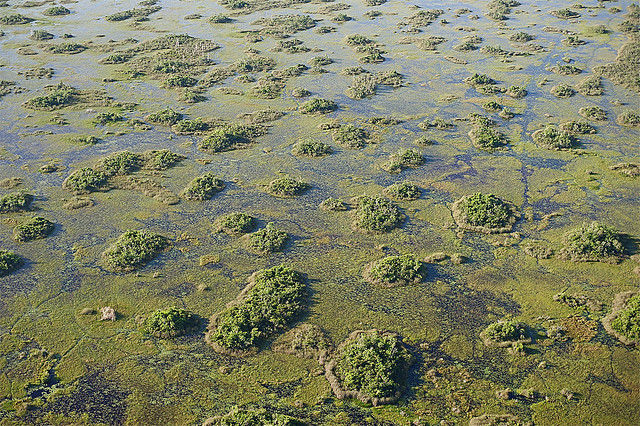From Alligator Alley to the Tamiami Trail, a proliferation of little islets in the Everglades has perplexed scientists for decades. Now, the mystery may have been solved – and the truth isn’t pretty!
Few things in the creepy, crawly Everglades could accurately be dubbed “cute”, but the region’s tiny islands – often no more than just a mound with tree or two– definitely fit the bill. Found throughout the South Florida swamp, they’re a picturesque respite from the typical dank mangroves and endless marsh. Not only are tree islands attractive, but they also serve as havens for wildlife; birds, alligators, small rodents, and even panthers all use them as homes (or just convenient places to dry out a bit).
Thousands of years ago, the topography of the Everglades looked very different; where marshy wetlands reign today, existed dry grasslands and forests, which vanished as the region’s water table gradually rose. Scientists originally speculated that the tree islands – some miniscule, others large enough to host a cottage – were formed from protrusions in the rock layer.
Now, a new theory has captured the scientific community – the tree islands may date from the early days of human habitation in Florida, and are, in fact, manmade islands. Not intentionally, however – the little isles sprung from our prehistoric garbage dumps. Known as middens, these ancient refuse deposits have long been a bounty for archaeologists, who find valuable clues to the culture, weather, and migration patterns of early humans within.
Excavations under tree islands by an archaeologist from the National Park Service, Margo Schwadron, have indeed revealed what appear to be middens below. These trash piles helped the formation of islands because the calcified remains of our garbage, particularly bones, formed a raised, stable platform where sediment could gradually build up, layer by layer, and plants could take root. When the water table of the Everglades began to rise, these isles were left firmly above the muck.
Quoted in the New Scientist, one researcher, Gail Chmura of Montreal’s McGill University, put an optimistic spin on the discovery. “This goes to show that human disturbance in the environment doesn’t always have a negative consequence,” Chmura said. “Hundreds to thousands of years ago, some of the things humans did actually created valuable ecosystems.” And at least, the gators and other creatures that enjoy catching some sun on the Everglade’s tree islands appreciate the outcome of our garbage.
Read the original article here: http://www.newscientist.com/article/dn20270-everglades-tree-islands-are-prehistoric-trash-piles.html




